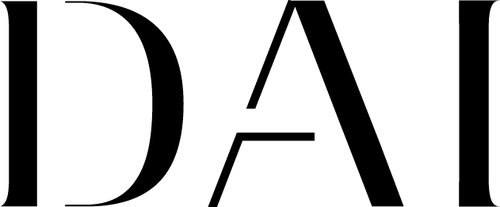If you haven’t heard, fashion is incredibly polluting for our planet. (If you already know, pass go and jump to paragraph 2). Every second, the equivalent of one garbage truck of textiles is landfilled or burned, according to Make Fashion Circular (totaling $500 billion in clothing value lost per year lost due to barely worn/recycled clothes). Fashion will use up a quarter of the earth’s carbon capacity if nothing changes by 2050. Mass overproduction of fashion is literally plaguing our planet.
From the time before we launched, we had a vision and a blank canvas. We were committed to building a brand that had a positive impact and sustainability at its core for our customers and our planet. We began developing our first collections within the current industry framework, through establishing a supply chain with sustainable, ethical partners and working with the most innovative, technical and eco-friendly fabrics available on the market. We are incredibly proud to work with all of the partners we have today.
As we continued down our intrepid sustainability journey, we found ourselves being encircled by the terms “circular fashion”, “circular economy”, “circularity” and “cradle-to-cradle design”. We began asking ourselves, What is circularity? How’s it different to sustainability? How can we be circular and where do we even begin?

Our humble baptism by fire came when founder Joanna Dai joined an industry panelhosted by Workspace Group with heavy hitting circular and sustainable fashion experts, including Laura Balmond, project manager in the Make Fashion Circular team at the Ellen MacArthur Foundation, Dr. Kate Goldsworthy, co-director of the Centre for Circular Design at the University of the Arts London, and Brooke Roberts-Islam, a fashion tech and sustainability thought leader.
That was late September. Fast forward two months, and we are proud to announce our first step into circularity with our very first circular design.
Eco Layer On Top

Made from 94% Micromodal
Modal is 100% certified biodegradable and returnable to mother nature
Our softest ever textile
Anti-microbial
Breathable
Machine Washable
The fibers are produced by Austria-based Lenzing™, a global leader in innovation with nature. Lenzing’s mission is to create smart, innovative fibers from sustainable production through the raw material of wood. In the process, it aims to utilize and commercialize all of its wood’s natural components by turning them into useful solutions for various industries.
So, the pulp comes from the cellulose of beechwood trees which are dissolved in a closed-loop process and spun into high-quality fibers.

What does closed-loop mean? Lenzing Modal® is produced in a process where up to 95% of the chemicals used are recycled during production. The co-product of sodium sulfate generated in fiber production is recovered and recycled in the detergent, glass and food industries.
Wastewater burden is minimized, and the production process is CO2-neutral since it is integrated with cellulose recovery.
That’s cool, right? But how’s that different to sustainability?

Circularity versus Sustainability
We need to understand sustainability to give context to circularity, so let’s get academic. So what is sustainability? There is no universally agreed definition but here are two that we like:
“Sustainable development is development that meets the needs of the present without compromising the ability of future generations to meet their own needs.” Bruntland Report for the World Commission on Environment and Development (1992)
“Sustainable development is a dynamic process which enables people to realise their potential and improve their quality of life in ways which simultaneously protect and enhance the earth’s life support systems” (Forum for the Future)
For Dai, long-lasting timeless designs, investment-worthy quality, eco-certified fabrics, lifecycle analysis, after-purchase care and energy conservation, an ethical supply chain, environmentally responsible packaging and carbon-neutral shipping are some of the ways we try to be sustainable and protect the planet.
And circularity? According to the Ellen MacArthur Foundation, a circular economy is defined as:
Looking beyond the current take-make-dispose extractive industrial model and aiming to redefine growth, focusing on positive society-wide benefits. It entails gradually decoupling economic activity from the consumption of finite resources, and designing waste out of the system. Underpinned by a transition to renewable energy sources, the circular model builds economic, natural, and social capital. It is based on three principles:
- Design out waste and pollution
- Keep products and materials in use
- Regenerate natural systems

To illustrate in a tangible example, Starbuck aims to turn thousands of tons of waste coffee grounds into everyday products (through a bacteria into succinic acid process), which can then be used in a range of products from detergents to bio-plastics and medicines.
In fashion, simple examples that involve circularity are:
- the recycling of clothes to give them a new life, such as our ongoing recycling program with Dress for Success Greater London and platforms like Depop and thredUP
- creating new yarns, fabrics and clothes out of recycled materials, such as Adidas x Parley shoes made of ocean plastic and many emerging swimwear brands
- creating new yarns, fabrics and clothes out of cellulose-based biodegradable fibers, such as our Eco Layer On Top made from the pulp of trees and biodegradable back to earth
Of course, these are not completely done in a zero-waste process as some waste and energy are inevitably not recovered, but they are intentional through human design in going in the circular direction within the current fashion framework.
Right. So how do sustainability and circularity differentiate?
Sustainability is has evolved from and is biased towards natural systems, so the biological, ecological and environmental aspects, or the left-hand side of this butterfly diagramfrom the Ellen MacArthur Foundation.
Circular economy focuses on the human construct designed to support the process of using raw materials into human consumption, or the right-hand side of this diagram. The intentional design of a system is what differentiates circularity from sustainability. The cycling of materials needs to be incorporated in the structural design, and the lack of this intentional design has resulted large amounts of earth-damaging waste and is what circularity is addressing. (Source: US Chamber of Commerce Foundation)
In our first ever circular design, the Eco Layer On Top, we source fibers from a natural, renewable resource (trees) which is produced in a human-designed closed-loop system to recover chemical by-products. We do expend energy to turn fiber into fabric and fabric into finished garments shipped to you, but 94% micromodal in the finished garments are also 100% biodegradable and returnable to earth at the end of its life.
We have designed and embedded circular processes into the overall lifecycle of this product to the best of our ability within the (mostly) uncircular industry and supply chain framework. We are really excited for this to be our first step in a long journey and commitment to make fashion not only sustainable, but also circular.
If you’ve read down this far, congratulations. We’d love to hear your feedback, and if you do question/comment thoughtfully below or email us at wegotyou@daiwear.com, we’ll be happy to provide you with free carbon-neutral shipping on your next order.



